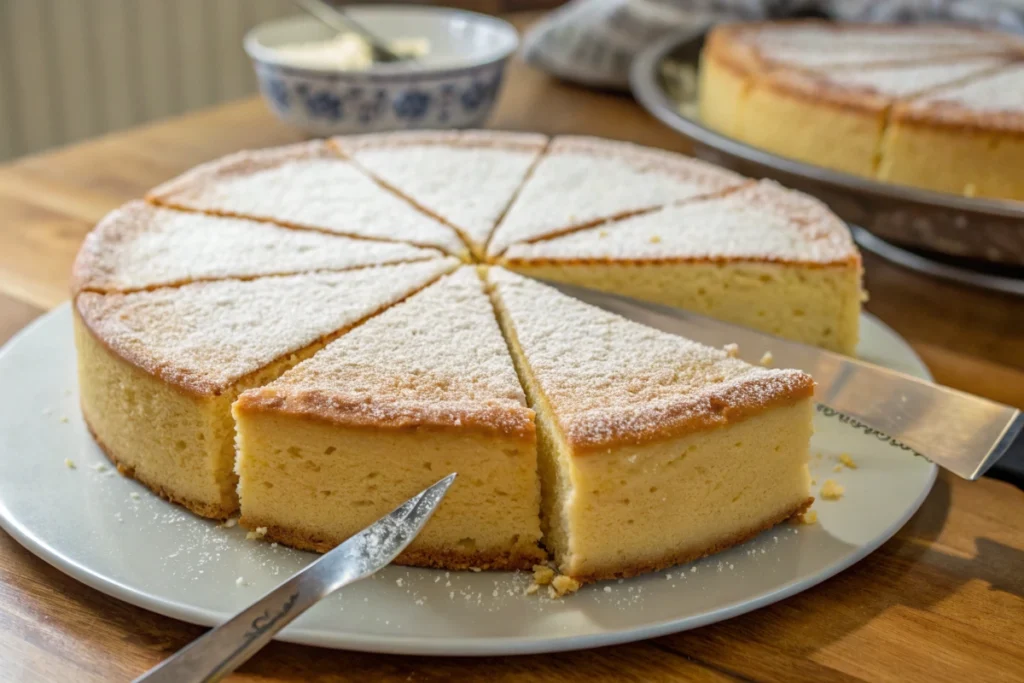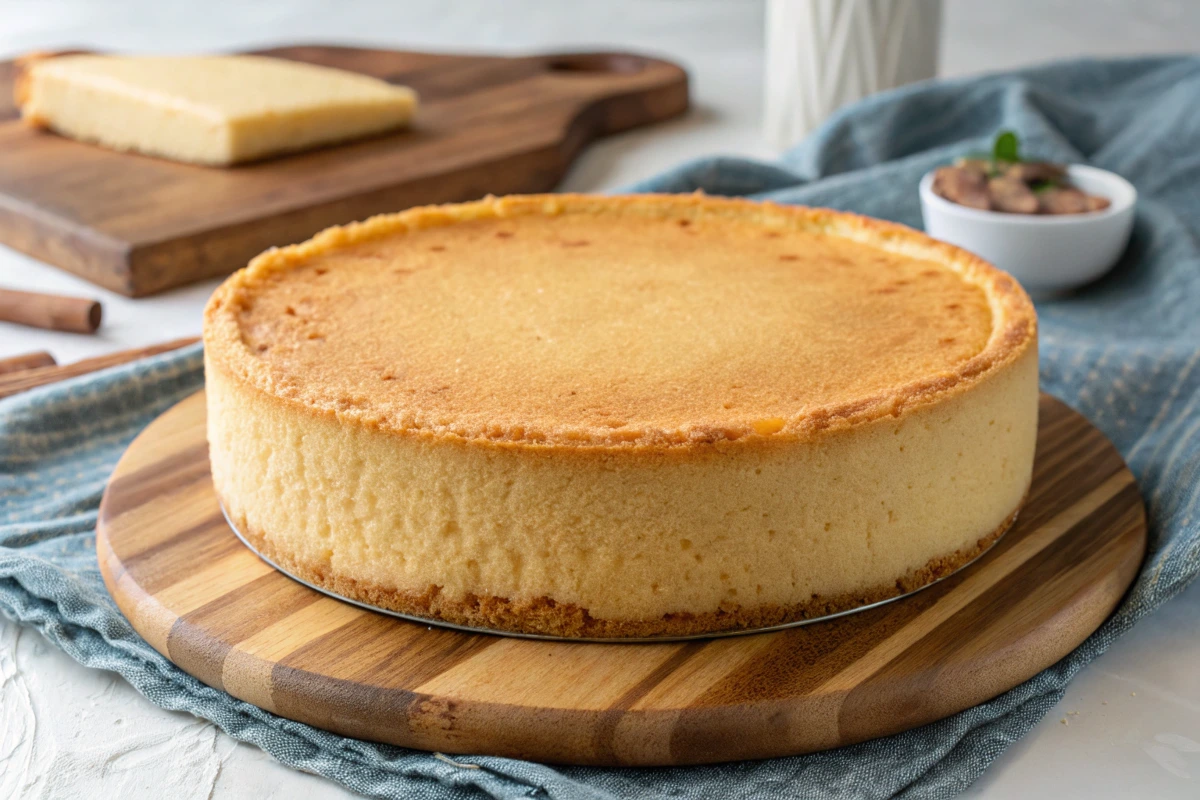Stottie Cake is more than just bread; it’s a slice of history from the heart of Northern England. Originally crafted from leftover dough in frugal households, this flatbread holds a unique place in the region’s culinary culture. This article takes you on a journey to understand stottie cake recipe bread machine methods, from its humble beginnings to modern adaptations. Whether you’re a seasoned baker or just starting out, you’ll find practical tips, serving suggestions, and answers to common questions to perfect your Stottie Cake using a bread machine.
Introduction to Stottie Cake
What is Stottie Cake?
Stottie Cake, or Stotty Bread, is a traditional flatbread hailing from the North East of England. Despite its name, it’s not a cake but a soft, chewy bread with a crusty exterior. Its distinct texture comes from a slow-baking process, often completed as the oven cools. Stottie Cakes were born out of practicality and thrift, using leftover white bread dough to avoid waste—a true testament to the ingenuity of past generations.
Origin and Cultural Significance
The name “Stottie” is derived from the Geordie word “stot,” meaning to bounce, referencing how the dough was traditionally kneaded and slapped onto surfaces. This bread isn’t just food; it’s a cultural symbol tied to community, resourcefulness, and cherished family memories. For many, the scent of a freshly baked Stottie Cake evokes nostalgic images of cozy kitchens and simple, hearty meals.
The Role of Frugality in Stottie Cake’s Creation
In days when most families baked their own bread, leftover dough was shaped into thick discs and baked directly on the oven’s cooling surface. This process resulted in a loaf that was both budget-friendly and filling. Today, we can replicate this tradition with the help of a bread machine, making it easier than ever to enjoy this classic treat at home.
Essential Ingredients for Bread Machine Stottie Cake
Key Components and Their Roles
To create a perfect stottie cake recipe bread machine, it’s crucial to start with the right ingredients. The classic recipe uses simple staples, but each element plays an important role in achieving the ideal texture and flavor.
- Strong White Bread Flour: This is the backbone of Stottie Cake. Its high gluten content ensures a firm, chewy crumb. Avoid using all-purpose flour, as it lacks the strength needed for this dense bread.
- Salt and Sugar: These pantry staples are essential for balance. Salt enhances flavor, while a small amount of sugar feeds the yeast, helping the dough rise.
- Yeast: The magic behind any bread! For a traditional touch, fresh yeast works wonders, but quick-action dried yeast is a convenient alternative.
- White Pepper: This spice adds a subtle, savory kick, elevating the bread’s flavor without overpowering it.
Optional Additives for Variations
While the traditional recipe is delightfully simple, you can experiment with ingredients to suit your tastes. For instance, a sprinkle of herbs like rosemary or thyme adds an aromatic twist. Alternatively, try mixing in a handful of oats or seeds for extra texture and nutrition. These tweaks keep the stottie cake recipe bread machine versatile for various palates.
Step-by-Step Guide to Making Stottie Cake in a Bread Machine
Preparing the Dough
Making Stottie Cake is surprisingly straightforward when using a bread machine. Start by adding the wet ingredients—water and yeast—into the machine’s pan, followed by the dry ingredients like flour, salt, sugar, and white pepper. Be sure to select the dough setting on your machine, as this prepares the base without baking it.
A pro tip: Check the dough’s consistency during the kneading phase. If it feels too sticky, add a little more flour. If it’s too dry, drizzle in some water. Achieving the right texture ensures your stottie cake recipe bread machine comes out just right.
Shaping and Preparing the Dough for Baking
Once the dough cycle is complete, remove it from the machine and place it on a floured surface. Shape the dough into a large, flat disc about 1 inch thick. Use a rolling pin to create an indentation in the center, or prick the surface with a fork—this helps the bread bake evenly.
After shaping, let the dough rest for about 15 minutes to relax. This step is essential for maintaining the bread’s chewy texture and achieving the signature Stottie look.
The Unique Baking Process
Replicating the slow-baking method of traditional Stottie Cakes is key to their authentic flavor. Preheat your oven to 400°F (200°C). Bake the bread for 15 minutes, then turn off the heat and leave it in the cooling oven for an additional 20-30 minutes. This step mimics the gradual cooling process used in old-fashioned ovens.
The result? A golden-brown crust with a soft, chewy interior that makes this stottie cake recipe bread machine a standout treat.

No direct matches for bread or traditional baked goods suitable for internal linking were found on the sitemap. However, to enhance your baking journey, you might enjoy exploring more recipes on the Absolut Recipes website.
Serving Suggestions and Pairings

Classic Accompaniments for Stottie Cake
A stottie cake recipe bread machine delivers more than bread—it’s a versatile base for a wide range of pairings. Traditionally, Stottie Cake is served warm, slathered with salted butter that melts into every nook. For a savory delight, pair it with crumbly cheeses like Cheshire or Wensleydale.
In Northern England, ham and pease pudding sandwiches are iconic. Pease pudding, a creamy spread made from split yellow peas, complements the bread’s soft interior and chewy crust. Spread generously on a Stottie slice and layer with thick-cut ham for an authentic experience.
For those with a sweet tooth, Stottie Cake pairs wonderfully with golden syrup, jam, or honey. These simple toppings turn a plain loaf into a comforting treat.
Creating Iconic Stottie Cake Sandwiches
Sandwiches made with Stottie Cake are both hearty and satisfying. Aside from the classic ham and pease pudding combo, consider modern twists:
- Smoked Salmon and Cream Cheese: The chewy bread contrasts beautifully with the creaminess of the cheese and the smoky flavor of the salmon.
- Grilled Veggie Delight: Stack roasted bell peppers, zucchini, and hummus for a vegetarian-friendly option.
- Breakfast Bliss: Add bacon, a fried egg, and a dollop of ketchup for a morning pick-me-up.
These pairings show how this humble bread adapts to both tradition and creativity.
Tips for Perfecting Stottie Cake in a Bread Machine
Common Challenges and Solutions
Mastering a stottie cake recipe bread machine can be tricky, but with a few tips, you’ll nail it. One common issue is overly dense bread. This can happen if the dough doesn’t rise properly. To avoid this, always use fresh yeast and ensure your water is at the right temperature—not too hot or cold.
Another challenge is achieving the ideal crust. If your crust is too tough, try brushing the dough with a bit of water before baking. This adds moisture, softening the outer layer.
Experimenting with Flour Types and Yeast
While strong white bread flour is traditional, experimenting with flour blends can yield delicious results. Mix in a small portion of wholemeal or rye flour for added depth of flavor. If you’re feeling adventurous, try sourdough starter instead of yeast for a tangy twist.
How to Store and Reheat Stottie Cake
Stottie Cake is best enjoyed fresh, but if you have leftovers, don’t worry. Wrap it tightly in foil or a reusable bag to keep it soft. Reheat in a low oven for a few minutes to revive its texture, or toast slices for a crisp edge that pairs beautifully with butter or toppings.
Frequently Asked Questions (FAQs)
Why is Stottie cake so called?
The name “Stottie” comes from the Geordie word “stot,” which means to bounce. Traditionally, bakers bounced the dough onto surfaces to shape it. This technique gave the bread its unique flat appearance. It’s also called a cake, but don’t let that confuse you—it’s actually a delicious, chewy bread. Learning this history adds charm to your stottie cake recipe bread machine baking experience.
What is the cake setting on a bread machine?
The cake setting on a bread machine is for batter-based recipes, not traditional dough. It skips the kneading step and instead gently mixes and bakes. While it’s perfect for quick breads, it’s not used for recipes like a stottie cake recipe bread machine. For those, the dough setting is your go-to choice. It prepares the dough so you can shape and bake it yourself.
What to do with a stottie?
Stottie Cakes are incredibly versatile. First, you can enjoy them with butter or jam for a simple snack. Next, use them to make hearty sandwiches with ham, cheese, or pease pudding. You can also pair them with soups or stews to soak up the flavors. No matter how you serve it, a stottie cake recipe bread machine guarantees a delicious, filling meal.
Can you freeze stotties?
Yes, you can freeze Stottie Cakes! First, let them cool completely after baking. Next, wrap them tightly in plastic wrap or foil to prevent freezer burn. Then, place them in a freezer bag or container. When you’re ready to enjoy, thaw at room temperature and reheat in the oven. This way, your stottie cake recipe bread machine stays fresh and delicious for longer!
Conclusion and Final Thoughts
A Nostalgic Treat with Modern Convenience
Stottie Cake has stood the test of time, evolving from a regional staple to a recipe that’s celebrated worldwide. Thanks to innovations like the bread machine, making this chewy, satisfying loaf at home is easier than ever. By following this stottie cake recipe bread machine guide, you can capture the essence of Northern England and bring a slice of tradition to your table.
Whether you enjoy it with savory ham and pease pudding or sweet, sticky golden syrup, Stottie Cake is a versatile bread that invites creativity. So why not give it a try? You may discover that this humble flatbread becomes a cherished addition to your own baking repertoire.
Would you like me to assist with the FAQ formatting or suggest further enhancements to the article?

